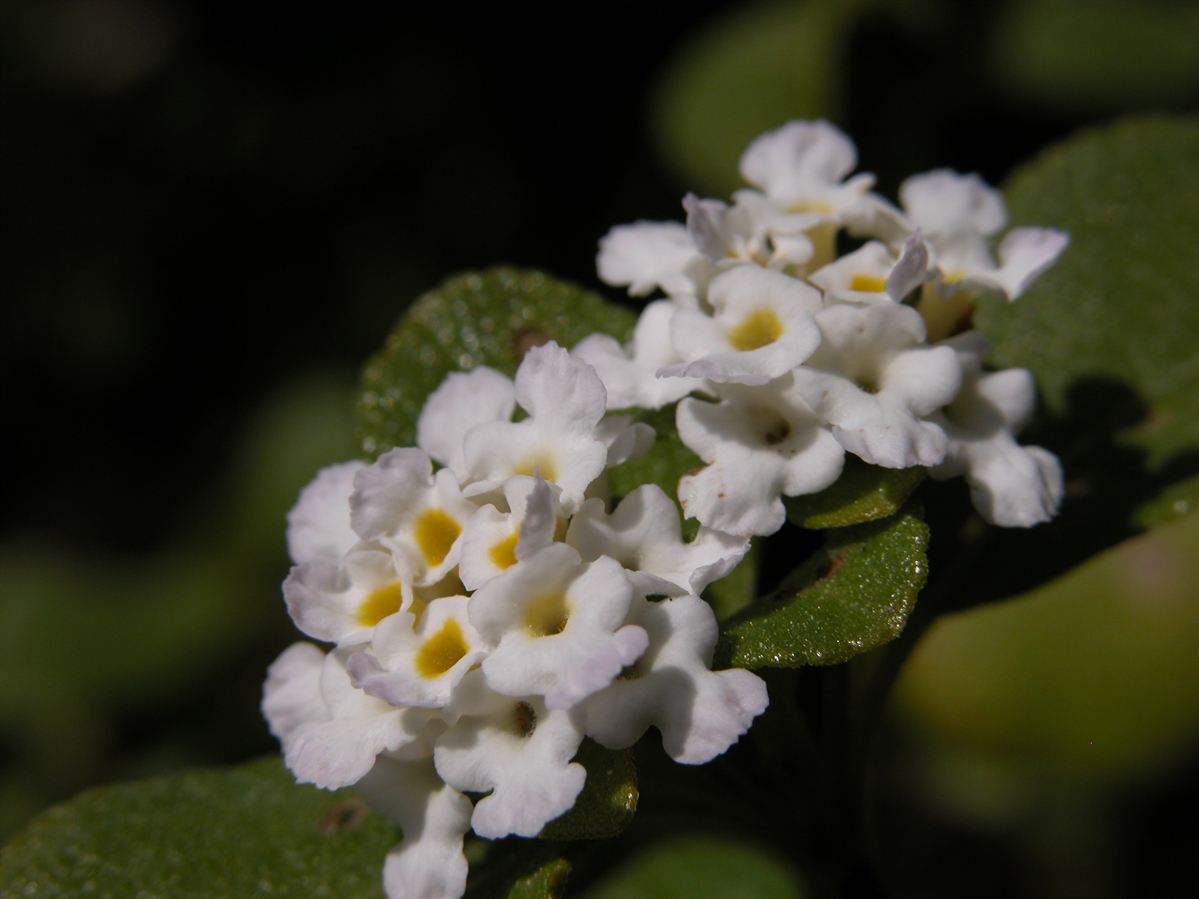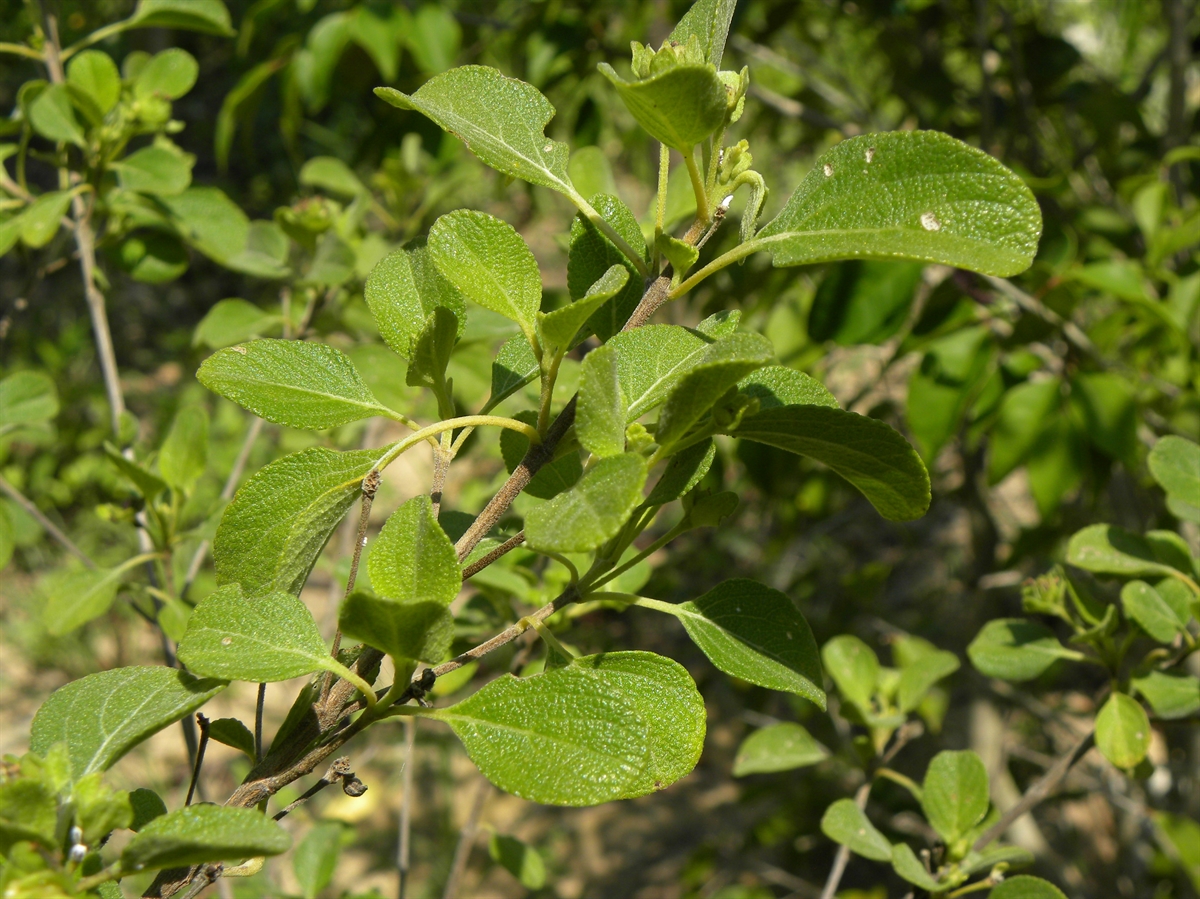Habit: Lantana involucrata grows as a small to medium size shrub up to 3 m in height. The leaves are arranged oppositely, up to 2 cm long and have a crenulate leaf margins. They are ovate and very aromatic.
The complete, perfect, zygomorphic flowers are arranged in a cymose fashion with involucral bracts. The calyx has four fused greenish sepals. The corolla has four fused white (sometimes pinkish) petals with a yellow center. There are four stamens that are fused to the corolla. The ovary is superior, with 2 locules. The fruit is a purplish pink drupe at maturity.
Habitat: Lantana involucrata grows in a broad range of habitats including Human Altered environments and coastal sand substrate Dry Broadleaf Evergreen Formation – Shrublands (coppice).
Distribution: Lantana involucrata occurs throughout the Lucayan Archipelago, Florida, the Caribbean, Mexico, as well as Central and South America.
Medicinal/Cultural/Economic usage: Lantana involucrata and the closely related L. bahamensis are primarily used to treat dermatological issues such as chicken pox, itching, and stings by boiling the leaves. L. involucrata is also used to treat lung congestion. The flowers have been used to treat high blood pressure.
The flowers are very attractive to butterflies and the fruits for birds. L. involucrata does well in dry conditions and is used in the horticultural industry for xeriscaping as well as for its beautiful flowers.


